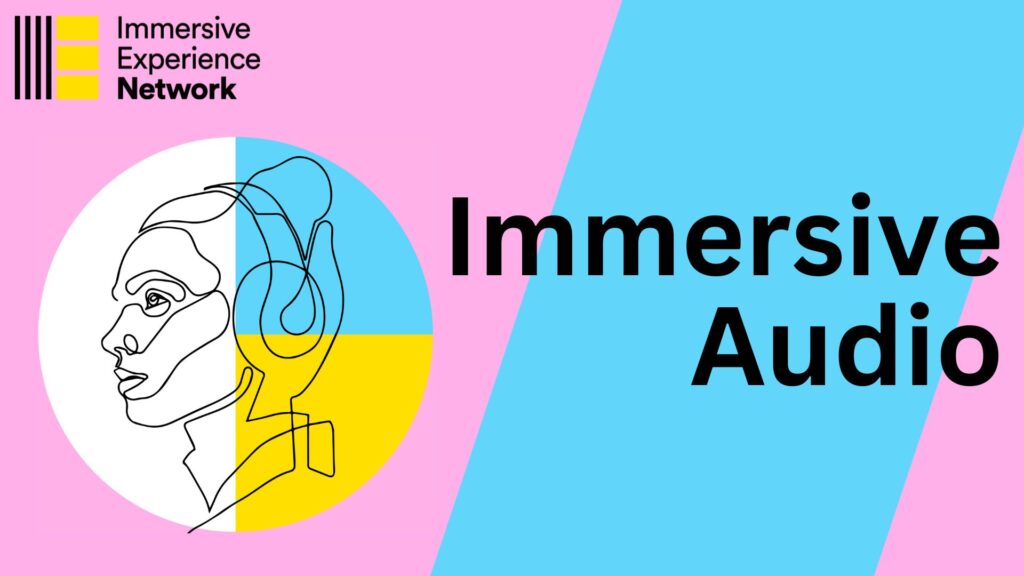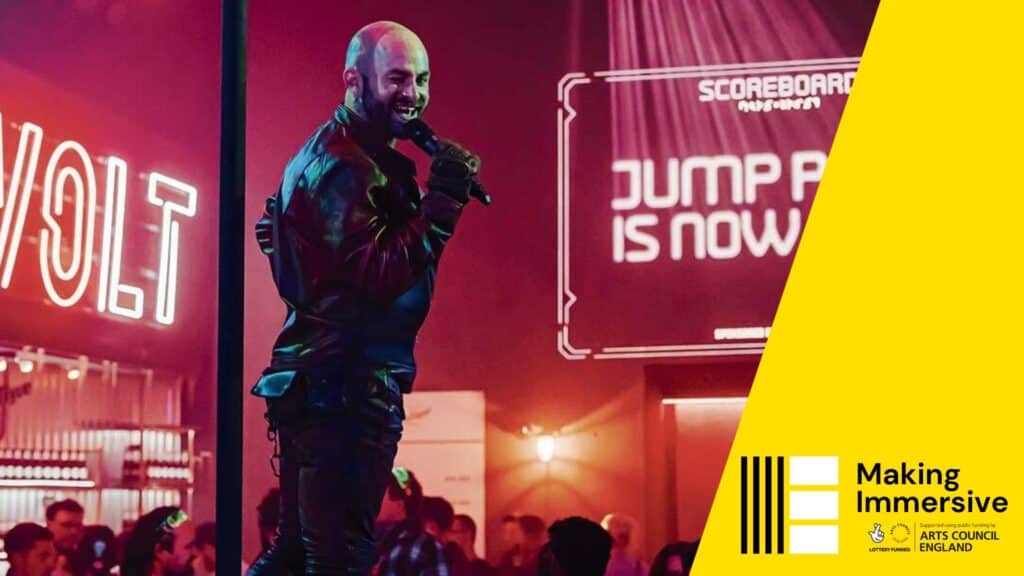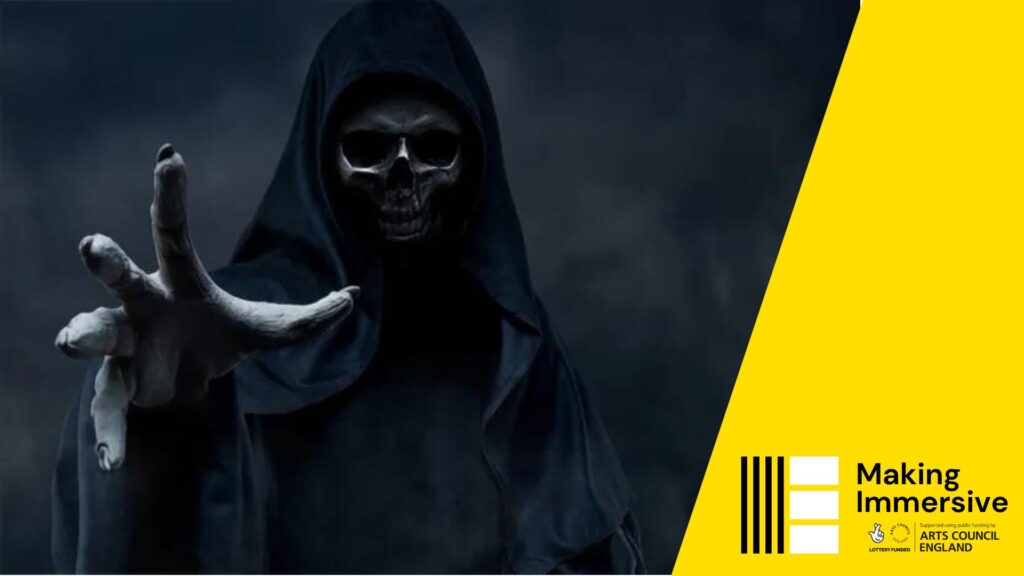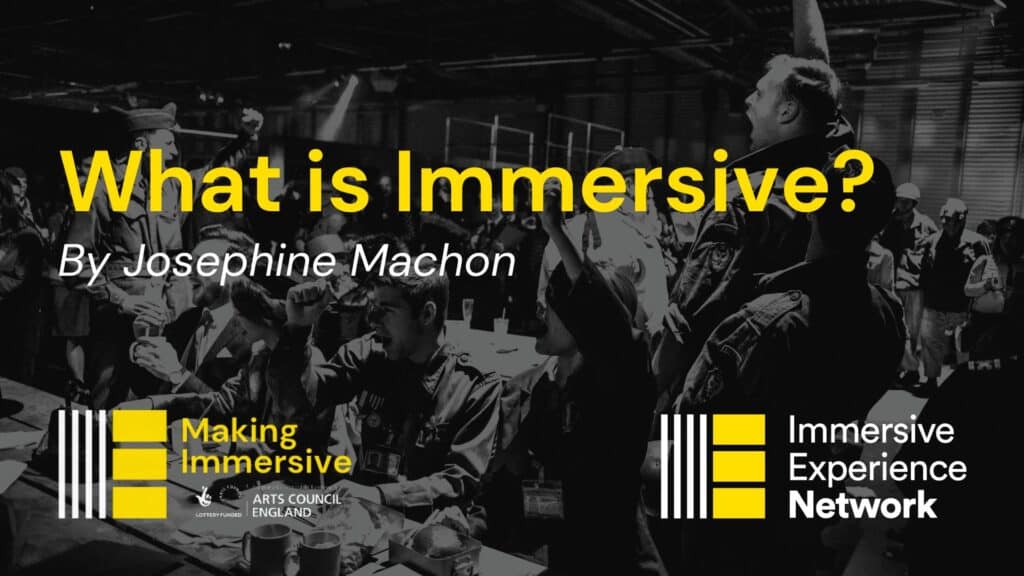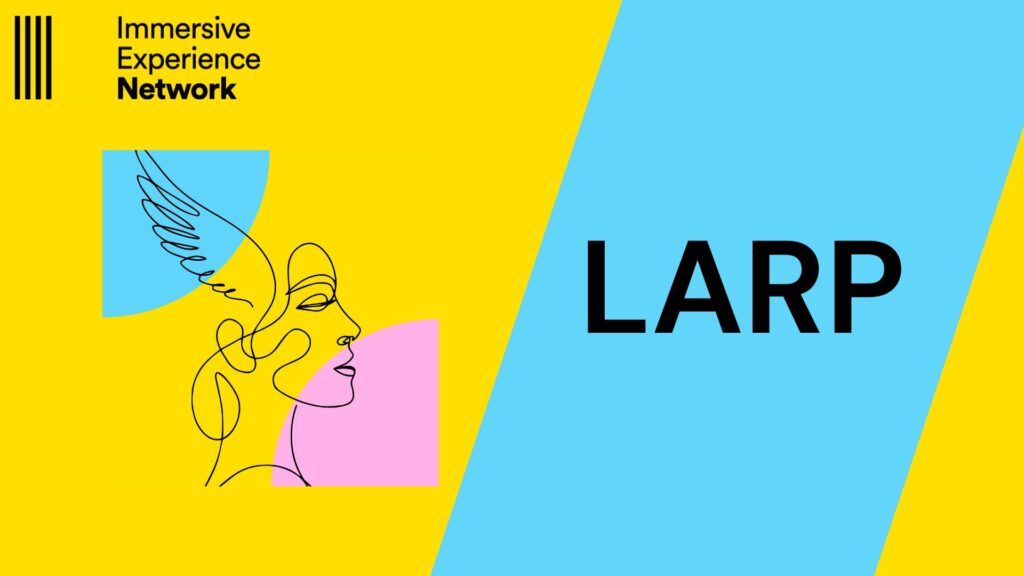What is immersive audio?
Immersive audio is both a sound technology and a kind of content that uses sound to create a deeply engaging and enveloping environment for the listener. It often employs 3D audio techniques and spatial sound design to simulate a realistic or fantastical auditory space, making the audience feel as if they are inside the story or environment being portrayed.
Immersive audio has come into its own as a distinct genre of immersive entertainment. It also forms a vital part of other kinds of immersive experiences, including virtual reality (VR) experiences, audio dramas, and themed attractions, enhancing the narrative and emotional impact by surrounding the listener with sound from all directions.
Where did immersive audio come from?
This form of entertainment has roots in radio dramas, but has evolved with advancements in audio technology, enveloping listeners in multi-dimensional soundscapes.
The Orson Welles 1938 broadcast of ‘The War of the Worlds’ is a landmark in immersive audio, utilising radio to create a realistic and gripping narrative that famously led to widespread panic among listeners who believed the fictional invasion to be real. This event showcased the power of audio to fully immerse and evoke strong emotional responses from an audience, setting a precedent for future explorations in the immersive audio genre.*
Immersive theatre pioneer David Rosenberg has been instrumental in pushing the boundaries of auditory experiences, blending technology and storytelling to captivate audiences.*
What makes immersive audio immersive?
Three-dimensional sound placement
Binaural audio is a recording technique that uses two microphones to capture sound, creating a three-dimensional sound field, where sounds can originate from any direction, including above and below the listener. This capability mimics the way humans naturally hear sounds in the real world, making the audio experience more realistic and engaging and making it seem as though sounds are coming from specific locations in the listener’s environment. This allows immersive audio to replicate physical space without needing to be bound by a certain venue, allowing the genre to benefit from the same immersion as site-specific experiences.
Head tracking
In VR and AR applications, immersive audio often incorporates head tracking technology, which adjusts the audio in real-time based on the listener’s head movements. This feature maintains the spatial accuracy of sounds, further enhancing the sense of presence and immersion in the virtual environment.
High-resolution audio
The quality of the audio also plays a significant role in creating an immersive experience. High-resolution audio, which offers greater detail and clarity than standard audio formats, can enhance the realism and depth of the sound field, making the immersive experience more convincing.
Environmental acoustics
Immersive audio often incorporates realistic environmental acoustics, such as echoes, reverberation, and sound occlusion (the blocking of sound by objects), to mimic the way sound behaves in different spaces. These acoustic cues help to create a more authentic and enveloping sound environment.
How is immersive audio similar to, or different from, other immersive experiences?
As a standalone format, immersive audio may be in-person experiences for multiple people at once in a specific place and at a specific time, or they can be similar to location-based augmented reality (AR) in that listeners can enjoy them on their own devices whenever they like.
Immersive audio experiences on their own are an emerging format, but they may also form part of other immersive experiences. Immersive audio is often used to augment escape rooms, immersive and interactive theatre, experiential art, themed attractions and scare attractions.
Examples of immersive audio
‘I Am Bird’ by Marie Klimis is an immersive audio experience that blends storytelling with sound design to create a vivid narrative journey. Listeners follow a young bird as it migrates to the UK from West Africa, and additional physical objects are available to explore at the same time when the work is presented in libraries.
UK company Darkfield created a series of in-person immersive audio shows staged in pitch black shipping containers. ‘Séance’, ‘Flight’ and ‘Coma’ used spatial audio design to make participants feel they were part of the narrative. Following the success of these shows, Darkfield produced a series of at-home immersive audio shows listeners could enjoy either alone or as part of a two-person experience. These at-home shows were released in 2020 amidst lockdowns and a lack of any in-person collective entertainment
In his review of the Darkfield Radio series, David Pollock wrote in The Stage: “What resonates most profoundly is how much the Darkfield Radio experiment allows something vaguely approaching a traditional performance space to be built, if only in the imagination. The audience-participants take a seat for a shared experience at a prescribed time, and what has been created fills their senses and the room around them, rather than just a screen. For a brief time it is like being back in a theatre.”
